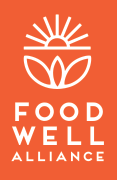Why Cities Should Pay People To Eat Their Veggies
/All the talk about "food deserts" dried up years ago. It turns out that truly barren concrete wastelands are harder to find than people figured. More recently, the conversation's turned toward "food swamps": places where food sources are abundant, but most of it's junk.
Focusing on food swamps and food deserts places the emphasis on a single policy point, which is physical access to healthy and affordable food. Physical proximity to food is a supply factor. Supply, however, doesn't drive consumer decision-making nearly as much as it might seem. Three other barriers to food access—economic, educational, and cultural barriers, all of them factors on the demand side—also shape consumer behavior.
Focusing on the economic barriers to quality food access over proximity to healthy food has many advantages.
Changing demand factors may be a more direct way for cities to promote a sustainable healthy-food ecosystem. That's the overarching conclusion from a recent report on access to healthy and affordable food put out by the San Francisco Planning and Urban Research Association (SPUR). In light of the U.S. Department of Agriculture's announcement that it has awarded $31 million in municipal grants to make healthy foods more affordable for Supplement Nutrition Assistance Program (SNAP) participants, it appears that policymakers are indeed starting to tackle the demand side of the equation.
"You need to be addressing both supply and demand through policy to really make a dent in hunger, the issues of public health, and quality of life in terms of how far people have to travel to find healthy food," says Eli Zigas, the lead author of the SPUR report.
When cities address demand, they stand to make substantial gains themselves...
Read the full article, "Why Cities Should Pay People To Eat Their Veggies," The Atlantic CityLab.
The views expressed here belong to the speaker and do not necessarily represent Food Well Alliance.




